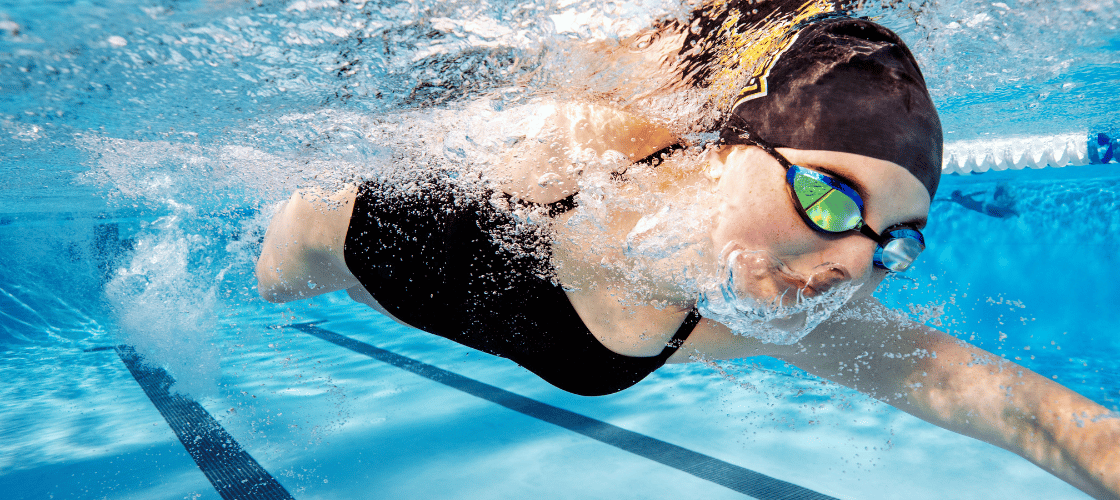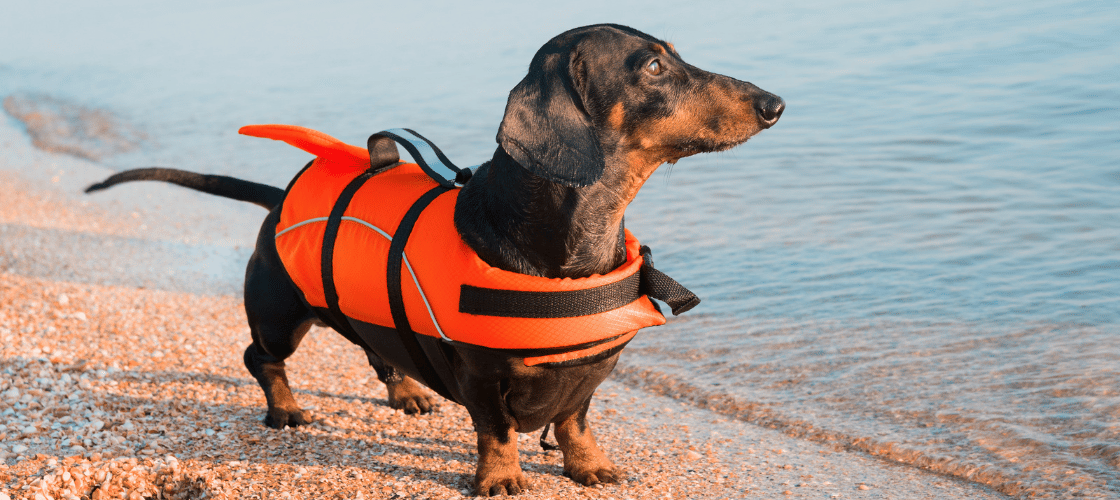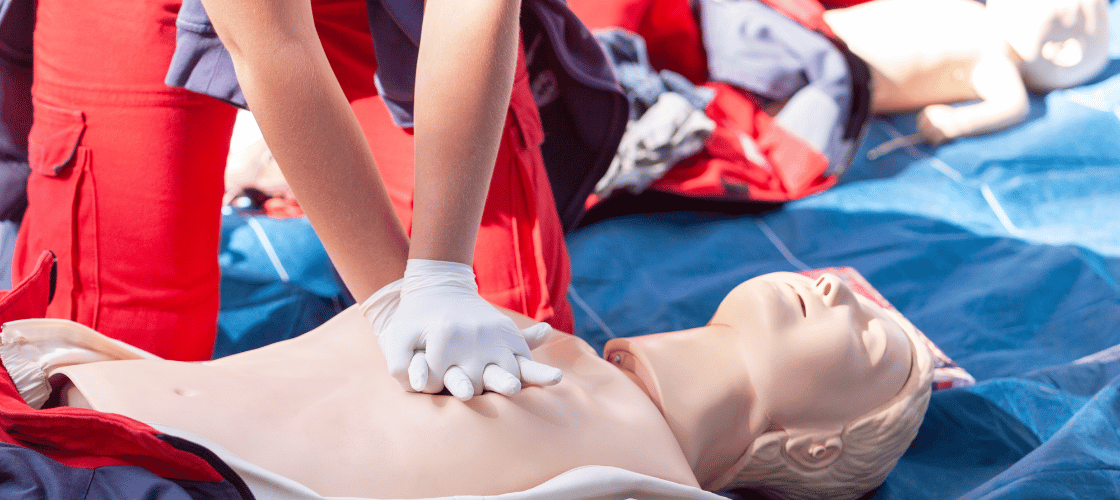Swimming Safety Tips for Beginners

The importance of swimming safety for beginners cannot be overstated. Learning to swim is not only an enjoyable and beneficial activity, but it also comes with inherent risks, especially for those new to the sport. In this article, you will gain valuable insights into essential swimming safety tips tailored specifically for beginners. By understanding and implementing these tips, you can ensure a safe and enjoyable experience in the water while enhancing your sports performance.
What You Will Learn
Throughout this article, you will learn about:
- The significance of swimming in designated areas supervised by lifeguards.
- The advantages of the buddy system for novice swimmers.
- The critical role of close supervision for children in the water.
- The importance of staying within arm’s reach of weak or inexperienced swimmers.
- The proper use of U.S. Coast Guard-approved life jackets.
- How to secure home pools with barriers to limit access.
- The benefits of investing in swim lessons and water safety education.
- Being prepared for emergencies by learning CPR and first aid.
- The specific risks associated with open water swimming.
- Practicing sun and heat safety while engaging in swimming activities.
By the end of this article, you will be equipped with comprehensive knowledge to prioritize safety when participating in swimming activities, particularly as a beginner.
1. Swim in Designated Areas with Lifeguards
Swimming in designated areas supervised by lifeguards is crucial for beginners to ensure their safety in the water. Here are some key points to consider:
- Safety Assurance: Designated swimming areas are carefully chosen and maintained to provide a safe environment for swimmers. These areas are usually free from hazards such as strong currents, underwater obstacles, or dangerous wildlife. Lifeguards are trained professionals who constantly monitor the water and can quickly respond in case of emergencies.
- Expert Guidance: Lifeguards play a vital role in ensuring the safety of swimmers, especially beginners. They are trained to identify potential risks and hazards, and they enforce rules and regulations to maintain order and prevent accidents. Their presence provides reassurance and peace of mind for both swimmers and their families.
- Emergency Response: Accidents can happen even in controlled environments, but having lifeguards present significantly reduces the response time during emergencies. They are trained in first aid, CPR, and rescue techniques, allowing them to provide immediate assistance if someone gets into trouble in the water. This prompt response can make a life-or-death difference.
- Educational Opportunities: Lifeguards often engage with swimmers by providing information on water safety practices, proper swimming techniques, and general guidelines for a safe swimming experience. Beginners can benefit greatly from this guidance, as it helps them build confidence in the water, learn important skills, and understand how to avoid potential dangers.
By swimming in designated areas supervised by lifeguards, beginners can minimize risks and enjoy their swimming experience with an added sense of security. The presence of trained professionals ensures quick response times during emergencies and provides opportunities for learning and skill development. Remember, always follow the instructions given by lifeguards and adhere to any posted rules or guidelines to ensure a safe and enjoyable swim.

2. Never Swim Alone: The Buddy System
As a beginner, it’s crucial to never swim alone, especially when you are still gaining confidence and experience in the water. The buddy system offers several advantages, providing an additional layer of safety and support while swimming.
Importance of Never Swimming Alone
Swimming alone can pose significant risks, especially for inexperienced individuals who may encounter unexpected challenges in the water. Without a companion, there is an increased vulnerability to accidents or distressing situations that could escalate without immediate assistance.
Advantages of Using the Buddy System
Having a swimming buddy ensures that there is someone available to assist in case of an emergency. This can range from providing help if you encounter difficulties in the water to quickly seeking aid from lifeguards or other trained professionals. Additionally, swimming with a buddy can enhance the overall enjoyment of the experience, as you can share the excitement and fun moments with a trusted companion.
By adhering to the buddy system, beginners can significantly minimize the potential dangers associated with swimming alone and establish a safer environment for their aquatic activities.
3. How to Supervise Children in the Water for Their Safety
When it comes to swimming safety, supervising children closely is very important. Here’s why parents or guardians should always pay close attention to children while they are swimming:
Reasons for Close Supervision
- Accidents can happen quickly: Even in shallow water, accidents can occur in a matter of seconds. By keeping a close eye on the children, you can react immediately if something goes wrong.
- Prevention of drowning: Drowning is a top cause of death among young children, and it can happen quietly and quickly. By being present and focused, you can prevent accidents and step in if needed.
- Monitoring for fatigue or distress: Children may get tired easily while swimming, especially if they are beginners. By watching them closely, you can spot signs of tiredness or distress and make sure they take breaks when necessary.
Tips for Effective Supervision
To make sure your supervision is effective, it’s important to avoid distractions. Here’s what you can do:
- Put away cell phones: In today’s digital age, it’s easy to get distracted by notifications and messages. However, when supervising children in the water, it’s crucial to put away cell phones or any other devices that may take your attention away.
- Stay within sight: Position yourself in a way that allows you to have a clear view of the children at all times. Avoid blocked views or participating in activities that limit your ability to watch them properly.
- Avoid excessive socializing: While it’s natural to want to chat with other adults or friends at the poolside, it’s important to prioritize the safety of the children. Keep unnecessary conversations or distractions that may distract you from your supervision duties to a minimum.
Close supervision means actively being involved and attentive while the children are in the water. By doing so, you can provide an extra layer of protection and make sure everyone has a safe swimming experience.
4. Stay Close to Weak or Inexperienced Swimmers
When weak or inexperienced swimmers are in the water, it’s important to stay nearby and be ready to help if necessary. This simple but effective safety measure can prevent accidents and ensure the safety of individuals who may have difficulty swimming.
How to Implement this Safety Measure:
- Keep an Eye Out: Always watch weak or inexperienced swimmers closely, looking for any signs of trouble.
- Stay Nearby: Position yourself close to the person, so you can easily reach them if they need assistance.
- Talk and Listen: Communicate clearly with the swimmer, offering encouragement and guidance as needed.
- Be Prepared: Know what to do in case of an emergency, so you can provide help right away.
By staying close and paying attention, you can make the water a safer place for inexperienced swimmers, allowing them to feel more confident and have fun without unnecessary risks.
5. Ensure Proper Use of U.S. Coast Guard-Approved Life Jackets
When it comes to swimming safety, one essential precaution for beginners, especially young children and inexperienced swimmers, is to wear a U.S. Coast Guard-approved life jacket. These life jackets provide numerous benefits and can greatly enhance the safety of those who are still learning to swim or lack confidence in the water.

Here are some key points to consider regarding the use of U.S. Coast Guard-approved life jackets:
- Safety and buoyancy: Life jackets are designed to keep individuals afloat in the water, providing an extra level of safety and buoyancy. They can help prevent accidents by keeping beginners afloat even if they become fatigued or panic in the water.
- Suitability and fit: It is crucial to select a life jacket that is appropriate for the individual’s weight, age, and swimming ability. A properly fitting life jacket should be snug yet comfortable, ensuring that it stays securely in place during water activities. The U.S. Coast Guard approval ensures that the life jacket meets specific safety standards and provides adequate buoyancy.
- Types of life jackets: There are various types of U.S. Coast Guard-approved life jackets available, including:
- Inherently buoyant: Made with foam materials and provide consistent floatation without the need for inflation or adjustments.
- Inflatable: Compact and comfortable to wear but require manual activation if an emergency occurs.
- Hybrid: Combines features of both inherently buoyant and inflatable life jackets.
- Proper usage: It’s essential to understand how to correctly use a life jacket before entering the water:
- Fasten all straps and buckles securely, with no loose ends or gaps between the body and the life jacket.
- Regularly inspect the life jacket for any signs of wear or damage and replace it if necessary.
- Limitations of life jackets: While wearing a U.S. Coast Guard-approved life jacket is an excellent safety measure, it should never replace proper swimming skills and supervision. It’s important to continue learning how to swim and gain confidence in the water through formal swim lessons and water safety education.
By ensuring proper use of U.S. Coast Guard-approved life jackets, beginners can have an added layer of protection and confidence while enjoying their swimming experience.
6. Secure Your Home Pool with Barriers to Limit Access
When it comes to ensuring swimming safety for beginners, securing home pools with physical barriers is very important. Installing fences or gates around residential swimming pools can help prevent unsupervised entry and reduce potential risks. Here are the key points to consider:
Why You Should Use Physical Barriers
The main reason for using physical barriers is to limit access to the pool area, especially when there is no direct supervision. This is especially important in households with young children or people who are not confident swimmers.
Different Types of Safety Barriers
There are several types of barriers that meet safety standards and provide effective protection. These include:
- Sturdy fences with self-latching gates
- Pool covers
- Door alarms
Each of these options helps improve the overall safety of the pool environment.
Making Sure Your Barriers Meet Safety Standards
It’s important to check that the barriers you choose meet local safety regulations and standards. For example, some areas may have specific requirements for fence height, gate latching mechanisms, and material strength. Following these guidelines is crucial for maximizing safety.
By using these physical barriers, homeowners can greatly reduce the chances of accidents and unauthorized access to the pool area, making it safer for everyone, especially beginners who may not know much about water safety rules.
7. How to Get Started with Swimming: Swim Lessons and Water Safety Education
Swimming is a fun and beneficial activity for people of all ages. If you’re new to swimming, it’s important to start with the right foundation by taking swim lessons and learning about water safety. Here’s what you need to know:
Why Take Swim Lessons?
Swim lessons are a great way for beginners to learn the basics of swimming and gain confidence in the water. Here are some reasons why you should consider enrolling in formal swim lessons:
- Structured learning: Swim lessons provide a structured environment where you can learn proper swimming techniques and skills under the guidance of certified instructors.
- Water safety: In addition to swimming skills, swim lessons also cover important water safety topics, such as recognizing hazards and knowing what to do in an emergency.
- Building confidence: For many beginners, swimming can be intimidating. Swim lessons offer a supportive setting where you can overcome your fears and become more comfortable in the water.
What Do Swim Lessons Cover?
During swim lessons, you can expect to learn a variety of skills depending on your level of experience:
- Basic swimming strokes: Beginners will start with learning the basic swimming strokes, such as freestyle and backstroke.
- Water survival skills: You’ll also learn important survival skills, such as floating on your back and treading water.
- Breathing techniques: Proper breathing is essential in swimming, and instructors will teach you how to coordinate your breathing with your strokes.
- Safety drills: Swim lessons often include safety drills, such as practicing what to do if someone is in trouble in the water.
Beyond Swim Lessons: Water Safety Education
While swim lessons are a crucial first step, it’s also important to educate yourself about water safety. Here are some additional steps you can take to stay safe in and around the water:
- Know the risks: Understand the potential dangers of different water environments, such as rivers, lakes, and oceans. Be aware of currents, waves, and other hazards.
- Learn rescue techniques: Knowing how to perform basic rescue techniques, such as reaching or throwing assists, can make a difference in an emergency situation.
- Use safety equipment: When engaging in water activities, always use appropriate safety equipment, such as life jackets or flotation devices.
- Supervise children: If you’re a parent, never leave young children unattended near water. Always keep a close eye on them and be within arm’s reach.
The Benefits of Swim Lessons and Water Safety Education
Investing in swim lessons and water safety education offers several benefits for beginners:
- Improved swimming skills: With proper instruction and practice, you’ll become a more proficient swimmer over time.
- Confidence in the water: By learning essential swimming techniques and overcoming any fears or anxieties, you’ll gain confidence in your abilities.
- Lifelong safety: The skills and knowledge you acquire through swim lessons and water safety education will stay with you for life, ensuring your safety whenever you’re around water.
Start Your Swimming Journey Today
Whether you’re an adult looking to learn how to swim or a parent wanting to teach your child about water safety, taking swim lessons is a valuable investment. Find a reputable swim school or instructor near you and get started on your swimming journey!
8. Be Prepared for Emergencies: Learn CPR and First Aid
When embarking on your fitness journey or simply enjoying water activities, it is crucial to be prepared for emergencies. Obtaining certification in CPR (Cardiopulmonary Resuscitation) and first aid is essential for anyone involved in water-related activities. Here are some key points to consider:
Why Learning CPR and First Aid is Important
Learning CPR and first aid equips you with the skills to respond effectively in emergency situations, potentially saving lives. This preparation is especially critical when engaging in water activities, as it can make a significant difference in the outcome of a water-related incident.

Steps for Performing CPR on a Drowning Victim
In the event of a drowning incident, knowing how to perform CPR could be life-saving. The basic steps involved in performing CPR on a drowning victim include:
- Assess the situation for safety.
- Check for responsiveness.
- Call for help and request an automated external defibrillator (AED), if available.
- Open the airway and provide rescue breaths.
- Perform chest compressions at the appropriate rate.
By familiarizing yourself with these steps and obtaining proper certification, you can contribute to a safer environment for yourself and others during swimming and water-based activities.
Remember that being prepared for emergencies goes beyond theoretical knowledge. Regular practice and staying updated on CPR and first aid techniques are crucial to maintaining proficiency, ensuring that you can respond confidently and effectively in real-life situations.
By incorporating CPR and first aid training into your swimming safety preparations, you enhance your ability to handle unforeseen circumstances with composure and competence. It’s an empowering step towards prioritizing safety while enjoying the many benefits of swimming.
9. Understand the Risks of Open Water Swimming
Swimming in natural bodies of water, such as lakes, rivers, or the ocean, can be an exhilarating experience for beginners. However, it’s important to be aware of the specific risks and potential dangers associated with open-water swimming. Understanding these risks will help you make informed decisions and ensure your safety while enjoying your swimming activities.
Key Risks and Dangers
Here are some key points to consider when it comes to the risks of open-water swimming:
- Currents: Open water often has unpredictable currents that can be much stronger than those in a pool. These currents can quickly exhaust even experienced swimmers and make it difficult to return to shore. It’s crucial to assess the current conditions before entering the water and avoid swimming in areas with strong currents.
- Sudden Changes in Depth: Natural bodies of water can have varying depths, which may change abruptly. This can pose a risk, especially if you’re not familiar with the area. Always exercise caution when swimming and be aware of sudden drops or shallows that could potentially cause injury.
- Underwater Hazards: Unlike controlled pool environments, open water may contain hidden hazards beneath the surface, such as rocks, tree branches, or uneven terrain. Before entering the water, take a moment to assess the area for any known hazards and swim cautiously to avoid accidents.
- Water Quality: The quality of open water can vary significantly from one location to another. Contaminated water can pose health risks due to pollutants or harmful microorganisms. Pay attention to any advisories or warnings regarding water quality in your chosen swimming spot and make informed decisions accordingly.
Tips for Safe Open Water Swimming
To mitigate these risks and ensure a safe open-water swimming experience, here are some additional tips:
- Always swim with a buddy or in the presence of a lifeguard who is familiar with the area.
- Familiarize yourself with local regulations and any posted warning signs at your chosen swimming location.
- Consider wearing a brightly colored swim cap or using a safety buoy to increase your visibility to others.
- If you’re new to open-water swimming, consider taking lessons or seeking guidance from experienced swimmers who can provide valuable insights and tips.
By understanding and respecting the risks associated with open-water swimming, you can enjoy this exhilarating activity safely and confidently. Remember, being prepared and informed is key to a positive swimming experience in natural bodies of water.
10. Stay Safe in the Sun and Heat When Swimming
When you’re swimming, it’s important to think about more than just the risks associated with being in the water. You also need to consider how the sun and heat can affect your safety. Here are some tips to help you stay safe from the sun and heat while you’re swimming:
1. Use Sunscreen
Before you go for a swim, put on some sunscreen with an SPF of 30 or higher. Make sure it protects against both UVA and UVB rays. Reapply it every two hours, especially if you’re going to be in the water for a long time.

2. Protect Yourself with Clothing and Accessories
Consider wearing these items to shield yourself from the sun:
- A wide-brimmed hat that covers your face, ears, and neck
- Sunglasses that block UV rays
- A rash guard or swim shirt made of UV-protective fabric
These can help protect your skin from getting burned or damaged by the sun.
3. Find Shade
Take breaks from swimming in shaded areas whenever possible. This will help reduce your direct exposure to the sun and give your skin a chance to recover.
4. Stay Hydrated
Drink plenty of water before, during, and after your swimming session. This will help prevent dehydration and keep your body temperature normal.
5. Know the Signs of Heat Exhaustion
Learn about the symptoms of heat-related illnesses like:
- Feeling dizzy or lightheaded
- Having nausea or vomiting
- Having a fast heartbeat
- Sweating a lot
If you or someone else has these signs, move to a cooler place right away. If the symptoms don’t improve or get worse, seek medical help.
By following these tips for sun and heat safety while swimming, you can make sure you have a great time in the water while also protecting yourself from the sun and heat.
Conclusion
Ensuring swimming safety is crucial, especially for beginners. By prioritizing safety measures, swimmers can have a more enjoyable and risk-free experience in the water. Here are some final thoughts and encouragement to implement the discussed tips:
- Safety First: Always remember that safety should be the top priority when engaging in swimming activities. By following the recommended safety guidelines, beginners can minimize the risks associated with swimming.
- Implementing Safety Measures: It is essential to implement the discussed safety measures consistently. Whether it is swimming in designated areas with lifeguards, using the buddy system, or providing close supervision to children, each measure plays a vital role in preventing accidents and ensuring everyone’s well-being.
- Seek Further Instruction: Learning to swim and practicing water safety is an ongoing process. Beginners should consider enrolling in formal swim lessons or comprehensive water safety programs to acquire essential skills and knowledge. These programs provide valuable information about potential hazards and rescue techniques.
- Stay Informed: Stay updated with the latest swimming safety guidelines and recommendations. Keep yourself informed about any new developments or changes that might affect your swimming experience.
Remember, swimming is a fun and rewarding activity that can be enjoyed by people of all ages. By prioritizing safety and implementing these tips, beginners can have a positive and safe swimming experience. So dive in, and have fun, but always prioritize your safety!






